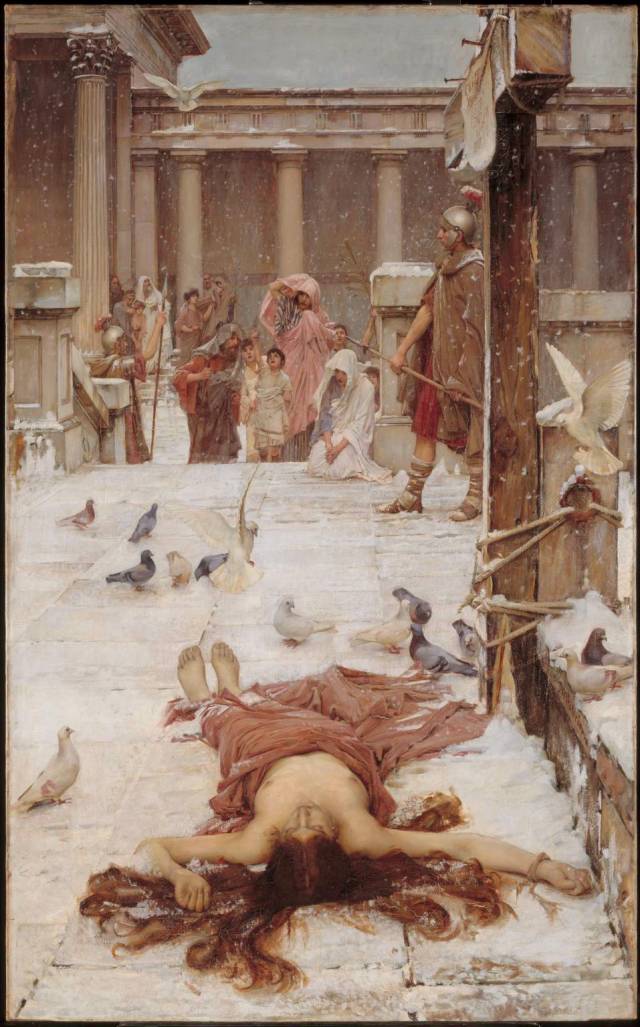Eulalia was a young Christian girl living under the rule
of the Roman Emperor Diocletian. For refusing to bow down
to Roman gods, she was brutally martyred for her faith in Christ.
Saint Eulalia
(1885)
John William Waterhouse
Although the details of her death were horrific, some church
historians claim that as she drew her last tortured breath, a
a white dove flew from her mouth and winged upward towards heaven.
Her executioners were said to be so terrified that they fled the scene.
It is further believed that snow fell on her body soon after her death,
symbolizing Eulalia's purity of heart and unblemished virginity.
In the Roman Catholic and Orthodox Churches
her feast day is observed on December 10th.
In the Roman Catholic and Orthodox Churches
her feast day is observed on December 10th.
Saint Eulalia
(1885)
John William Waterhouse
(1849-1917)
English painter
(1849-1917)
English painter
Eulalia was a good girl,
She had a beautiful body, a soul more beautiful still.
The enemies of God wanted to overcome her,
they wanted to make her serve the devil.
She does not listen to evil counselors
(who want her) to deny God, who lives up in heaven.
Not for gold, nor silver, nor jewels,
not for the king's threats or entreaties,
nothing could ever persuade the girl
not to love continually the service of God.
And for this reason she was brought before Maximian*,
who was king in those days over the pagans.
He exhorts her-but she does not care-
to abandon the name of Christian;
She gathers up her strength
And subsequently worship his god
She would rather undergo persecution
Than lose her spiritual purity.
For these reasons she died in great honor.
They threw her into the fire so that she would burn quickly.
She had no sins, for this reason she did not burn.
The pagan king did not want to give in to this;
He ordered her head to be cut off with a sword.
The girl did not oppose that idea:
She wants to abandon earthly life,
and she calls upon Christ.
In the form of a dove she flew to heaven.
Let us all pray that she will deign to pray for us.
That Christ may have mercy on us,
And may allow us to come to Him after death
Through His grace.
The "Sequence of Saint Eulalia" also known as the "Canticle of Saint
Eulalia" dates from around the year 880 and is the earliest surviving
piece of French hagiography. The poem above, translated into English,
is similar to the hymn to Eulalia in the Peristephanon,
a 4th century work by the Christian poet, Prudentius.
* From 286 to 305 A.D. Maximian was co-emperor with Diocletian.
* From 286 to 305 A.D. Maximian was co-emperor with Diocletian.



No comments:
Post a Comment